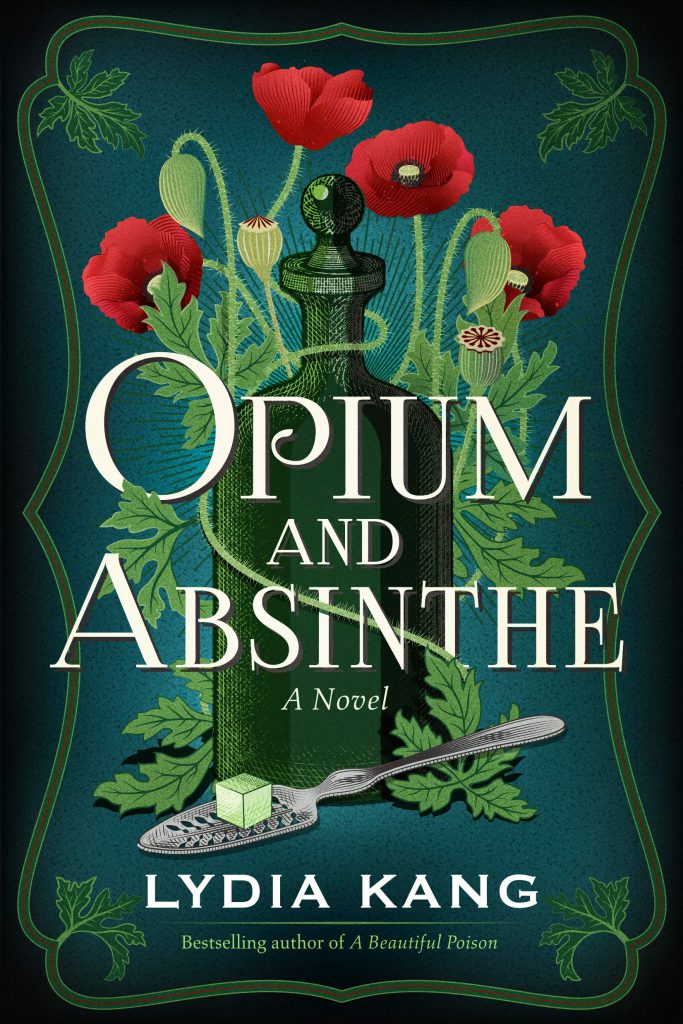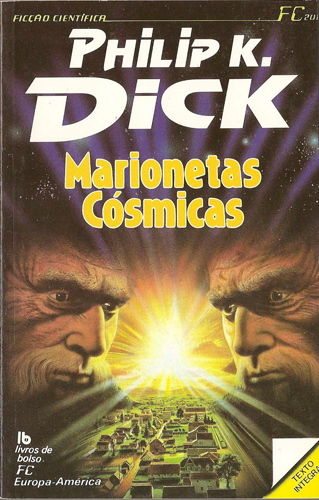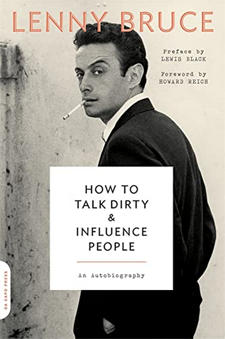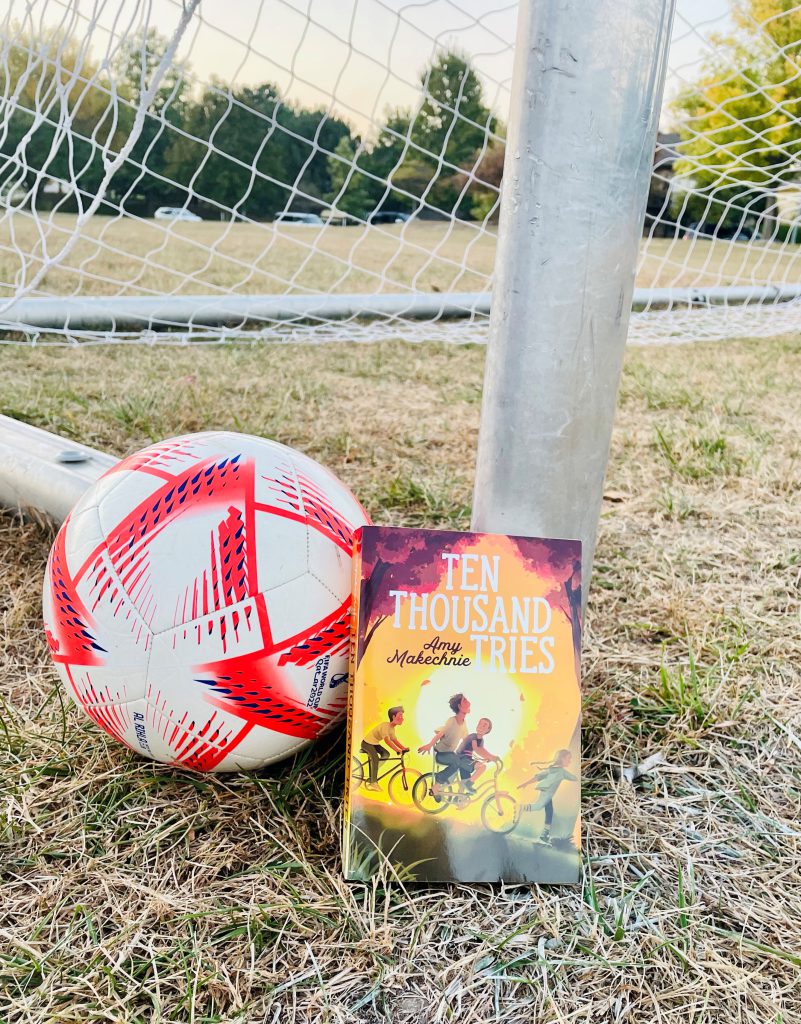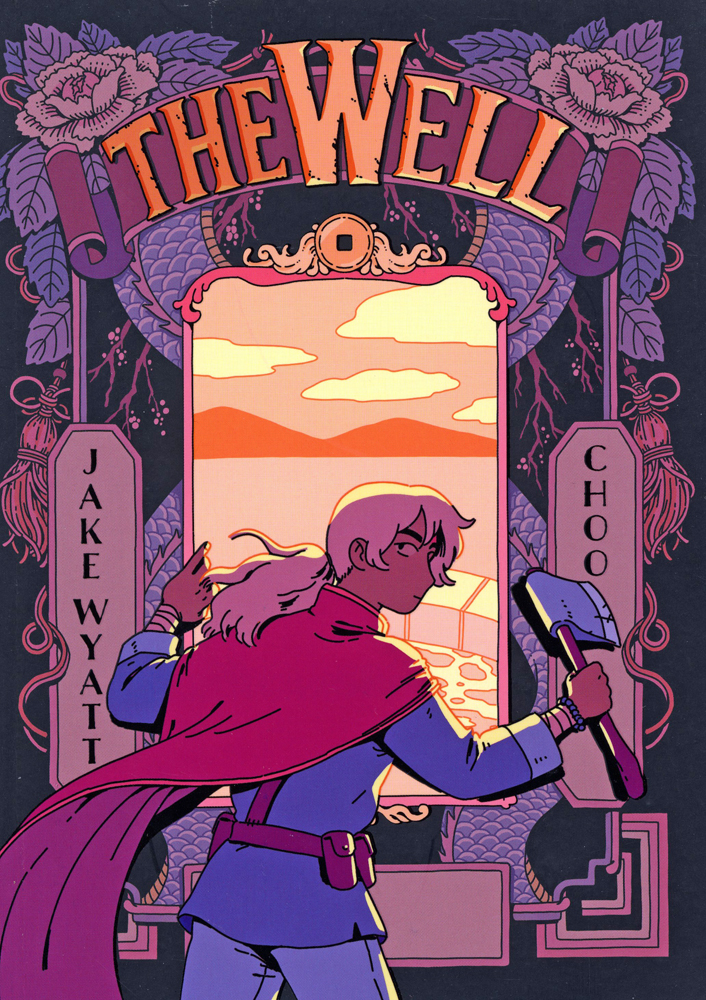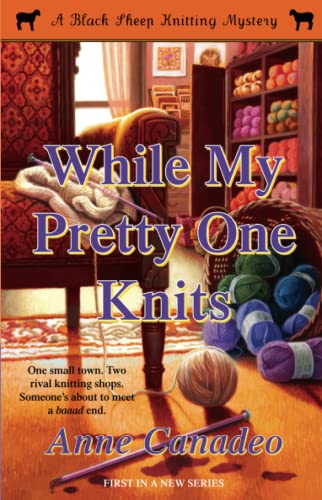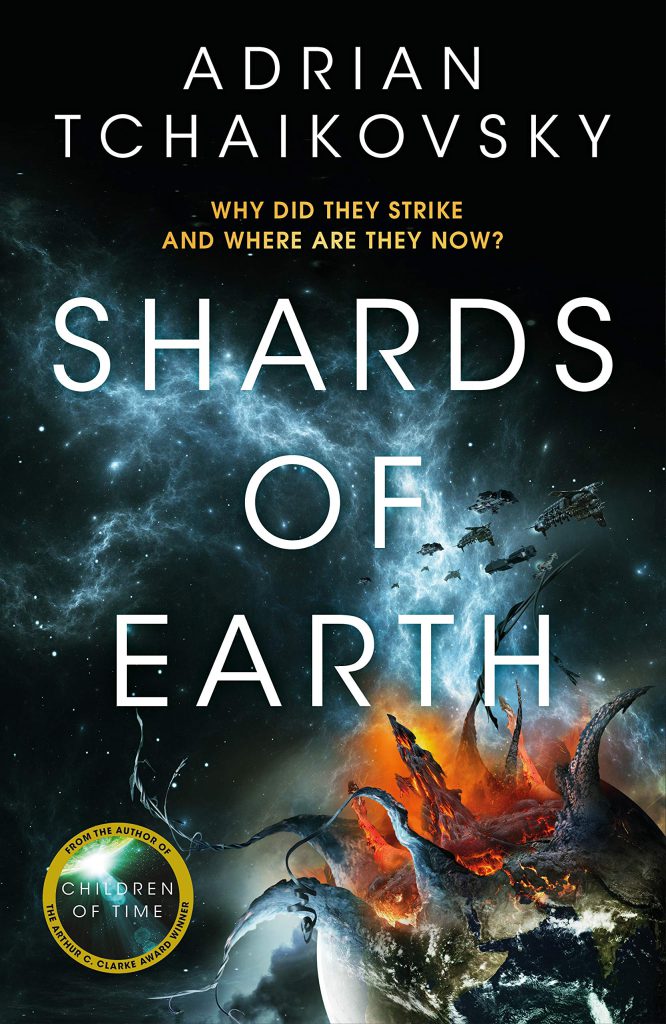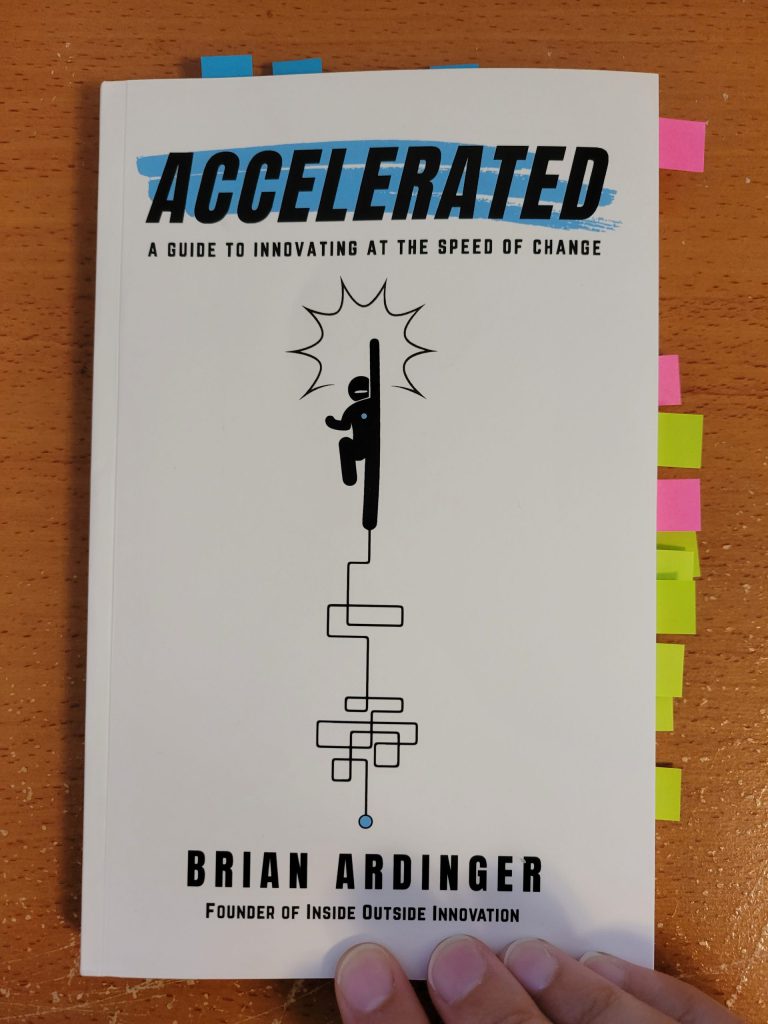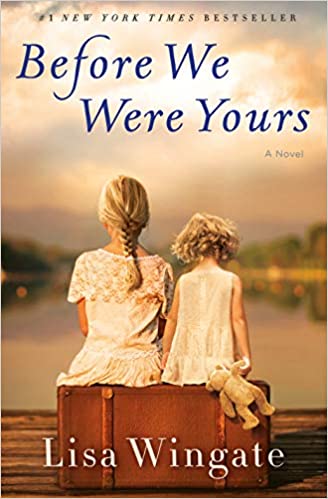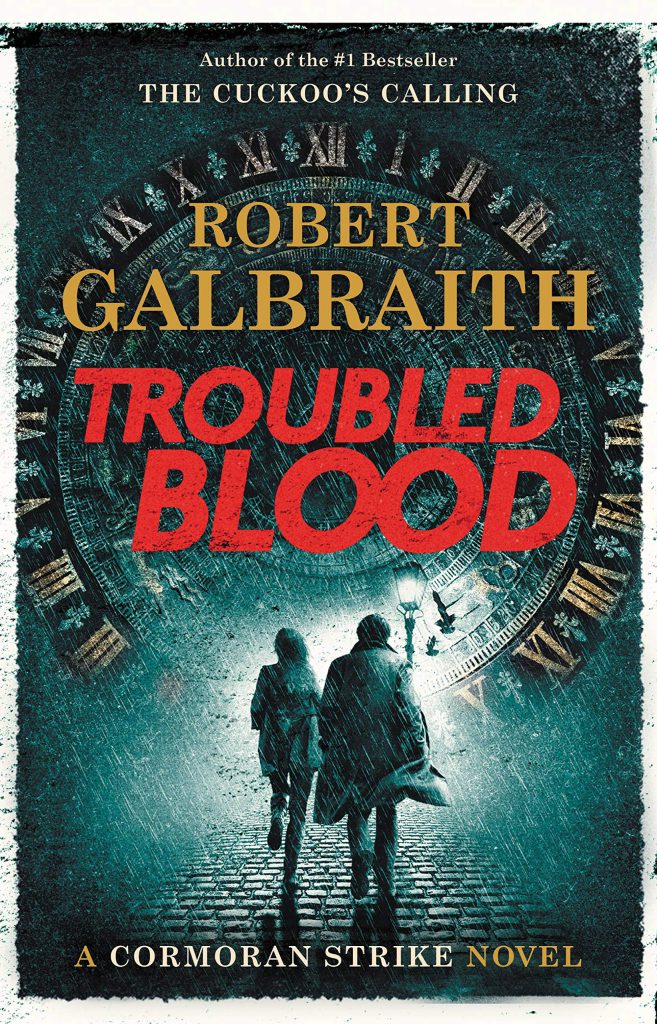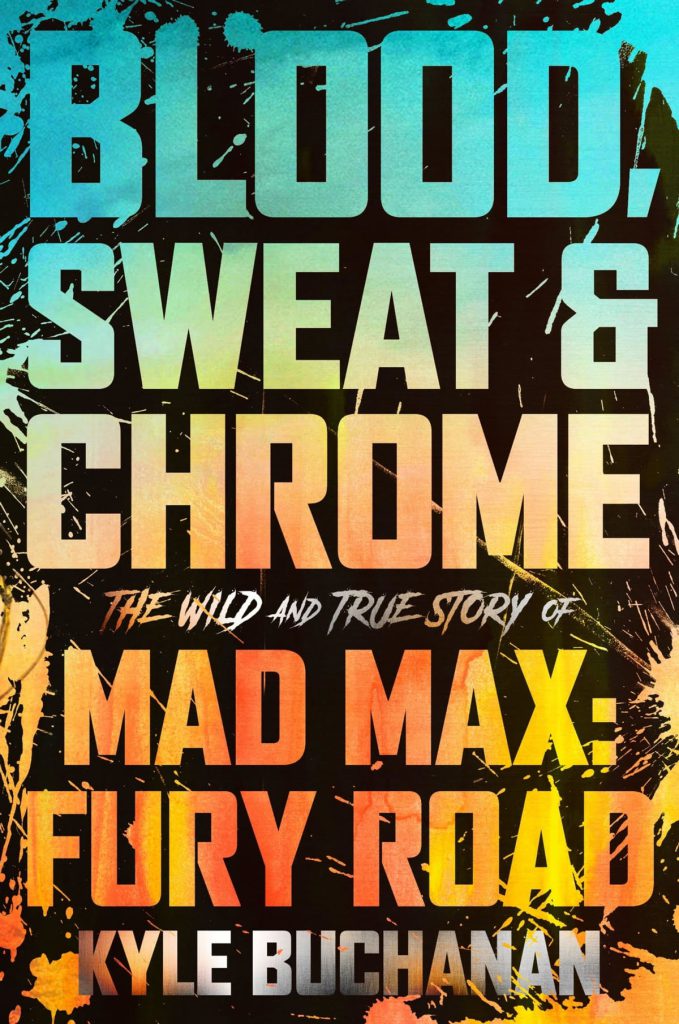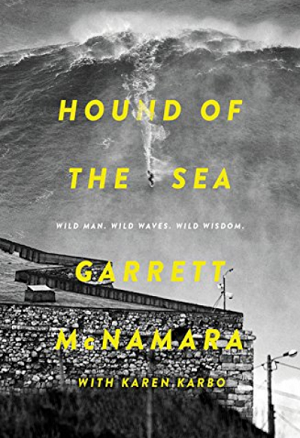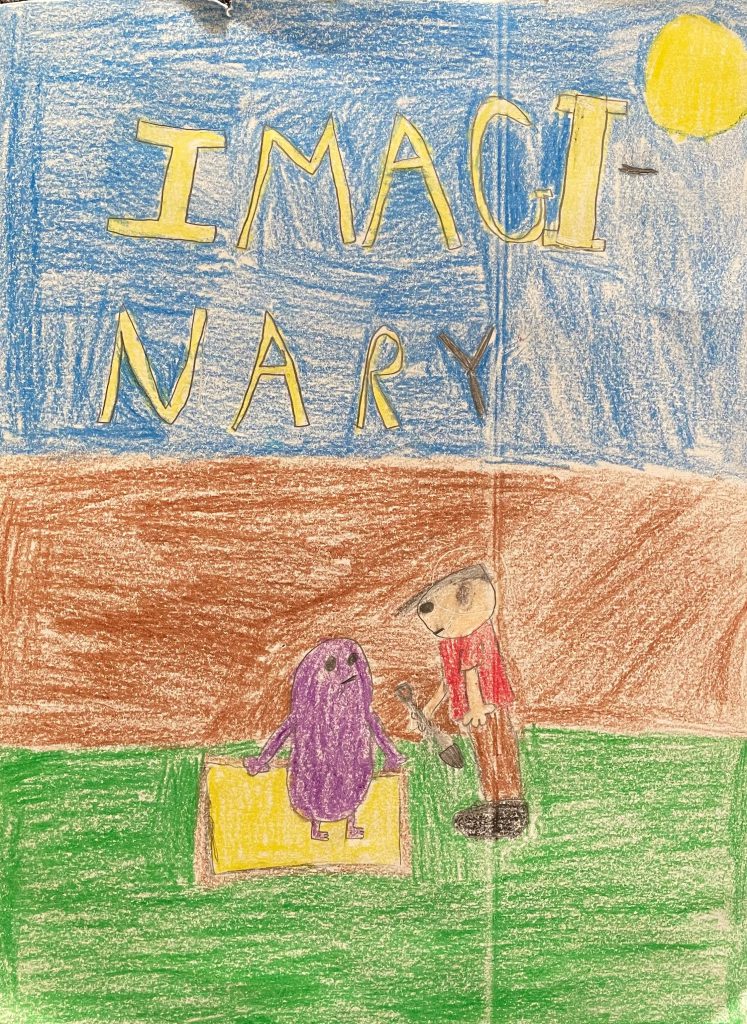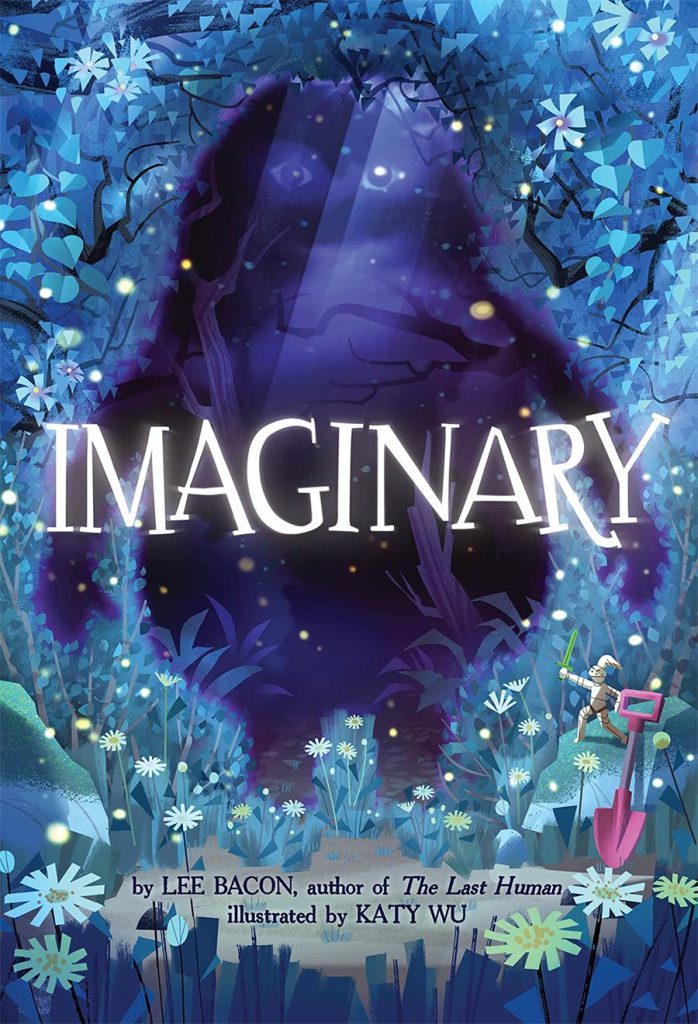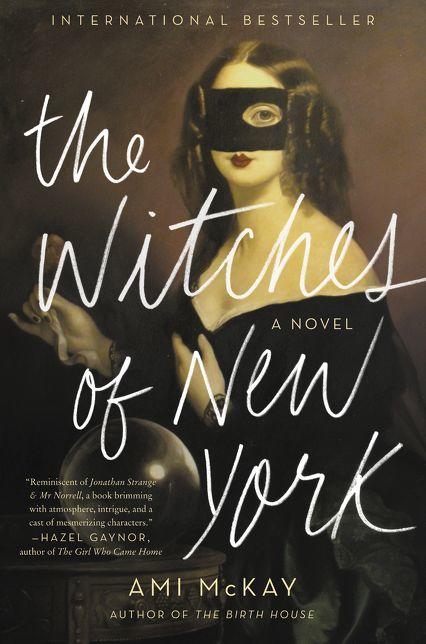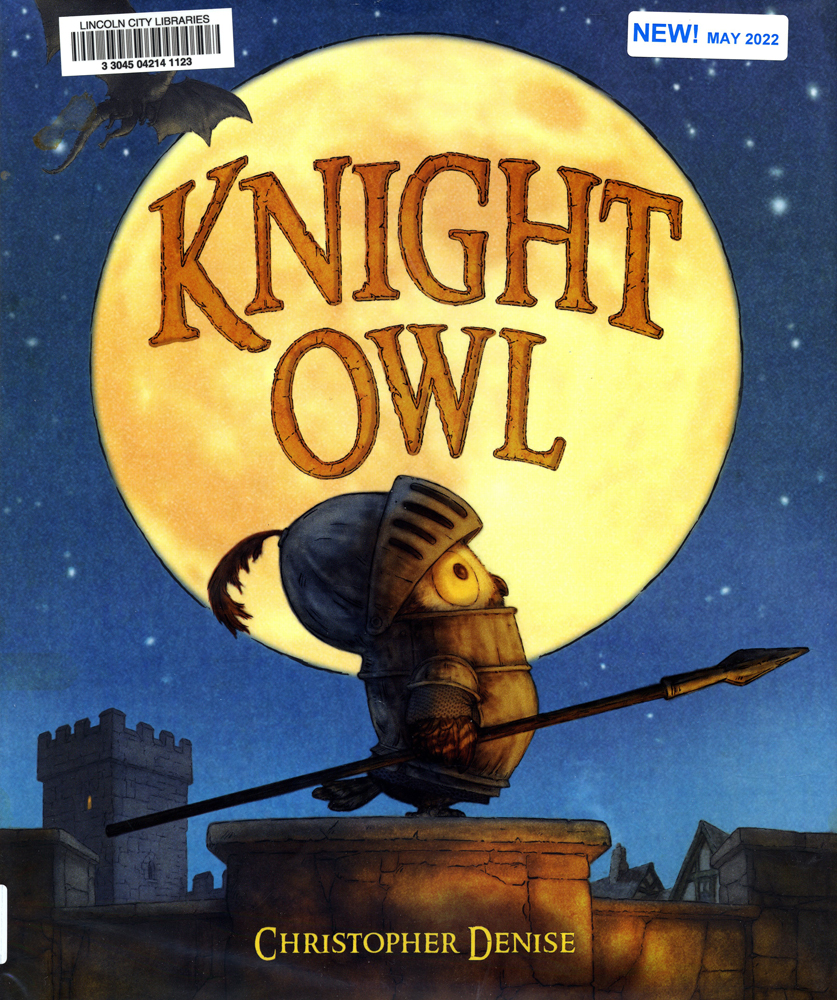Search the Blog
Categories
- Books & Reading
- Broadband Buzz
- Census
- Education & Training
- General
- Grants
- Information Resources
- Library Management
- Nebraska Center for the Book
- Nebraska Memories
- Now hiring @ your library
- Preservation
- Pretty Sweet Tech
- Programming
- Public Library Boards of Trustees
- Public Relations
- Talking Book & Braille Service (TBBS)
- Technology
- Uncategorized
- What's Up Doc / Govdocs
- Youth Services
Archives
Subscribe
Tag Archives: Friday Reads
Friday Reads: Opium and Absinthe by Lydia Kang
It seemed good timing to read Lydia Kang’s Opium and Absinthe soon before Halloween. The vampire connection was enticing. The historical novel takes place in New York City in 1899, the year that Bram Stoker’s Dracula was published. Lucy Pembroke is found dead in an alleyway by puncture wound and drained of blood on the eve of her marriage ceremony. Mathilda (Tillie) Pembroke is Lucy’s younger sister. Tillie is determined to find the murderer. An overprotective mother and a controlling grandmother hamper her efforts. Tillie must go to imaginative and extreme lengths to escape the confines of her home to seek answers to her many questions about the murder.
Tillie’s challenges include an opium and morphine addiction that came about following a horse-riding accident. Intended to provide pain relief, addiction followed and continued. Opium and Absinthe places drug addiction as a central theme. Heroin is also notable, introduced by Bayer as a cough remedy. At the time, all were legal and commonly prescribed.
An intriguing mix of characters emerge including New York’s rich and privileged and the working class poor. The Pembroke family is among the city’s elite. The mystery unfolds at a steady pace and, at least for me, comes to a surprising end.
The book is included among CrimeReads Best Historical Fiction of 2020.
Described as among the great virtuosos of the crime genre, Lydia Kang is an author and an internal medicine physician. Her writings include historical mysteries, popular history, young adult sci fi, essays and poetry. Kang’s most recent book, Patient Zero: A Curious History of the World’s Worst Diseases, co-authored with Nate Pedersen, is a 2022 Nebraska Book Award winner for nonfiction – popular history. Kang’s The November Girl won the Nebraska Book Award for Young Adult Fiction in 2018.
Kang, Lydia. Opium and Absinthe: A Novel. Seattle: Lake Union Publishing. 2020
Friday Reads: The Cosmic Puppets, by Philip K. Dick
Ted Barton has a problem. He doesn’t exist. When he visits his old hometown, the one he left eighteen years ago, he recognizes nothing. When he visits the town newspaper and checks into their archives, he discovers his name in the obituaries: funny, he doesn’t feel like he died of scarlet fever eighteen years ago. Something is Going On, and Ted Barton is going to hang around town for the length of an expanded novella until he finds out just what that Something is.
So begins the spaced-out mystery horror of 1957’s The Cosmic Puppets, which takes a Twilight Zone-style jumpstart of one individual’s profound alienation from history and memory, and builds from there, until the whole town, then the whole universe, is involved — and the nature of reality itself is called into question. In other words, just another book by Philip K. “for now we see through a glass, darkly” Dick (1928 – 1982), the fictionalizing philosopher whose works are the source for such movies and series as Blade Runner, The Man in the High Castle, A Scanner Darkly, Total Recall, and several others.
It turns out that the town Ted Barton vividly remembers – Millgate, Virginia – is still there, but on top of it lies the consistently projected illusion that he and the rest of the townspeople currently perceive. Through strenuously concentrating on his memories, he can bring back small details temporarily, but he can’t hoist up the real town alone: it’s a mass delusion that must be countered with a collective effort of memory.
Alliances are formed and sides taken, snakes and spiders fight with bees and moths, and primordial forces that predate the physical universe rise and join the psychic tug of war. Dick wrote most of this book in 1953, making it one of his first efforts, but PKD fans will notice that many of the classic preoccupations he explored in later books and writings — such as the 1978 speech “How to Build a Universe That Doesn’t Fall Apart Two Days Later” — are already in place, especially the old philosophical question, “what is real?
A warning to puppet enthusiasts and ventriloquists: puppets do not play a role in the story, except perhaps metaphorically; the original title of The Cosmic Puppets was A Glass of Darkness. This title is available through hoopla Digital via your local library (I read mine through Lincoln City Libraries) and also the Internet Archive, as well as well-curated used bookstores everywhere.
Dick, Philip K. The Cosmic Puppets. Boston: Mariner Books, 2012.
Top image: Cover of Centipede Press edition, 2020
Friday Reads: How to Talk Dirty and Influence People
“All great truths begin as blasphemies.”
–George Bernard Shaw
“Powerful people and popular ideas don’t need First Amendment protections; marginalized people and unpopular ideas do.”
–Nadine Strossen, former ACLU president (1991-2008), Senior Fellow, FIRE
During a time where free speech assaults are now taking place on behalf of both the political right and the left (nothing new to see here, folks), it’s interesting to take a look at this classic autobiography from Lenny Bruce. How to Talk Dirty & Influence People is a take on Dale Carnegie’s How to Win Friends & Influence People, and describes the life of Bruce from his childhood up to the time of his premature death at the age of 40. Born in Mineola, NY, Bruce’s parents divorced when he was 10, and during his childhood he spent time living and working on a farm in Wantagh, NY. Bruce joined the Navy at the age of 16 in 1942, serving in WW2. After appearing in drag for a comedy bit, he convinced his CO that he had homosexual urges and received an honorable discharge. The Max Klinger character from M*A*S*H was based on Bruce. After discharge, he went on to develop his stream of consciousness comedy routines and worked as an MC in Jazz clubs. His routines often focused on themes of race relations, organized religion, and criticism of “the establishment”. Certainly, in today’s world, most of his bits would offend damn near everyone, and there likely would be numerous calls to ban or censor him. This in fact was the case with Brandeis University, which now hosts Bruce’s audio files. Brandeis University is named after former Supreme Court Justice Louis Brandeis, champion of free speech and advocate of counter speech:
“If there be time to expose through discussion, the falsehoods and fallacies, to avert the evil by the processes of education, the remedy to be applied is more speech, not enforced silence.”
This notion seems to be forgotten or kicked to the curb in today’s world. After the audio files came in the possession of Brandeis University, Michael Weller, former graduate of Brandeis and playwright, wrote a play based on Bruce’s work, examining the ideas of free speech. Outrage over the content of the play quickly ensued, and the University promptly cancelled it. Oh, the irony. College campuses are now replete with multiple trigger warnings on practically everything, self-censorship among students for fear of repercussions, and frequent disruptions and outbursts directed at speakers who are disagreeable. They are no longer the bastions of free speech, thought, healthy debate, and exchange of ideas they once were. As Penn Jillette says:
“If college is so comfortable and safe — I’m glad I’m not there. Who wants comfortable? Who wants safe? This old piece of carny trash still wants to be pushed and challenged, and I’ve proved I can do that without college. And it’s a lot cheaper than Brandeis.”
How to Talk Dirty and Influence People also describes Bruce’s marriage to burlesque dancer Honey Harlow, and the two obscenity trials that ultimately broke him (physically, emotionally, and financially). Plagued by legal troubles relating to his drug use and financial scams (he dressed as a priest and solicited donations for a “leper colony in British Guyana”), he was ultimately charged with obscenity in (of all places) San Francisco (acquitted), Chicago (convicted but later overturned by the Illinois Supreme Court), and New York (convicted but later overturned by the New York Court of Appeals). Bruce died while the NY appeal was in process.
The book is an interesting incursion into Bruce’s life, and while the title mentions talking dirty, there’s not much of it in this book. A few tidbits of his routines and trials, but it’s mostly about his life and not his comedy acts.
Bruce, Lenny. How to Talk Dirty and Influence People: An Autobiography. Da Capo Press, Reprint edition. 2016.
Friday Reads: Ten Thousand Tries by Amy Makechnie
The other players on the team looked at me funny when I borrowed a ball to take this photo at the end of their practice, but my kid just rolled his eyes and smiled. “Yeah, my mom does stuff like this all the time.” Being a a recurring #BookfaceFriday model has jaded him to the weird things I do with book covers. (He’s even better at lining up the shot than I am now.)
This book is also about a boy whose parents spend a lot of time with him on the soccer field. Golden Maroni’s dad was a pro soccer player, and now coaches the local high school team. His mom coaches Golden’s middle school team – she’s referred to as Coach or Mom depending on the chapter’s setting.
The title refers to Malcolm Gladwell’s assertion in his book “Outliers” that it takes 10,000 hours to achieve mastery of a skill. While Amy Makechnie specifies in her end-of-book acknowledgements that this rule doesn’t apply to sports, our hero Golden is sure that 10,000 hours of soccer practice will make him as phenomenal as his idol Lionel Messi. But off the field, things aren’t going as well.
Lucy, his team co-captain and best friend (and maybe more?), will move soon if Golden can’t drive away her annoying future stepfather. His older sister Jaimes certainly needs another 10,000 hours of driving practice before Golden feels safe riding with her. And worst of all, a year and a half after a surprising diagnosis, Golden’s dad is losing his battle with ALS; no amount of positive thinking and hard work can stop the progression of this terrible disease. It feels like Golden’s whole world is crashing down around him. The Maroni family motto is “We do hard things.” They work hard, play hard, and never give up on each other. But this year will be different, and Golden must learn that letting go isn’t the same as giving up.
This book was chosen as one of the 10 nominees that young adults across the state will read and vote on for the 2023-24 Golden Sower Novel Award next school year.
Makechnie, Amy. Ten Thousand Tries, New York, New York : Simon & Schuster, 2021.
Posted in Books & Reading, General
Tagged Amy Makechnie, books, Friday Reads, Juvenile literature, Reading, realistic fiction, sports fiction, YA, Young Adult
Leave a comment
Friday Reads: Star Wars: Women of the Galaxy
Who is your favorite woman in the Star Wars universe? You may find her in this wonderful character guide, Star Wars: Women of the Galaxy, written by Amy Ratcliffe and illustrated by a group of incredibly talented female and non-binary artists.
“They are heroes and villains, Sith and Jedi, senators and scoundrels, mothers, mercenaries, artists, pilots….”
This oversized coffee table book tells the stories of 75 female characters from “films, fiction, comics, animation, and games”. Some of the profiles are your typical fictional character biography and others include background information about how the characters were envisioned and created. As a contributor to StarWars.com and Star Wars Insider, Ratcliffe has insider knowledge and shares details about these women that you may have never heard before.
The artwork is beautiful and in varying styles. There are over 100 illustrations from 18 amazing artists, such as comic book artists Annie Wu and Elsa Charretier, Lucasfilm artist Amy Beth Christenson, freelanceers Eli Baumgartner and Viv Tanner, and one of my favorite geeky artists, Karen Hallion.
You will find many characters you recognize as well as lesser known women (and droids!), but all of them make Star Wars a vibrant and inspiring place. I have been a huge Star Wars fan from the very beginning. Yes, I saw Star Wars in the theater in 1977. But the franchise has expanded so much since then, even I learned about many female characters I had never heard of, mostly from all of the novels and comics. Which has made my need-to-read list even longer!
Who is my favorite woman of Star Wars? I can’t pick just one. My first choice of course is Princess Leia, more recently Ahsoka, R2-KT, and Doctor Aphra. And of course, as the Chief Librarian of the Jedi Archives, Jocasta Nu holds a special place in my heart.
Finally, as the first woman of the Star Wars galaxy, the simple dedication For Carrie Fisher is perfect.
Friday Reads: The Well by Jake Wyatt
What would you wish for?
The Well is a full color graphic novel published for high school readers. Li-Zhen, called Lizzy, lives with her grandfather and for the first time she will travel to town by herself with some goats to sell, riding in a sailboat in which her friend Eli now rows. While in town, she snitches some coins from a sacred fountain to pay for her return trip. After returning home she is visited that night in her sleep. The well demands repayment, not in coins but in wishes. Lizzy must find a way to provide what has been wished for, or she will be drowned. The well’s servant says it is the wishes connected to each of the three coins that are valuable, not the coins. She has to talk friends and strangers into helping her and she only has a day to accomplish each task. Each task is different, and the last task may kill her.
One of the things that appealed to me about this book is the care put into wishing. Little children wish for candy or toys, they said, but wishing should be more thoughtful. Eli tells Lizzy that her mother explained it this way: “…first you’re supposed to think about what you have, what you are grateful for. Then think about what you want out of life.”
For the first task she asks for help from Eli, and they end up kidnapping a woman who has wished to return to her island, but now no longer wants to go there. The island was destroyed by the leviathan. The well doesn’t care about current wants or changes in wishes. It wants her to give what was wished for on the stolen coin, however long ago the wish was made.
This past summer I saw the movie “Three Thousand Years of Longing” with Idris Elba playing a genie. Wishes are a big part of his existence. That movie and this graphic novel made me think more about wishes. Fairy tales often have wishes involved, almost always tricking the wisher. I liked what Eli said in the book about wishing. It can be done too quickly with little contemplation as to the likely result of the wish. Maybe wishes should stay in our hearts and not be spoken out loud.
(The Nebraska Library Commission receives free copies of children’s and young adult books for review from a number of publishers. After review, the books are distributed free, via the Regional Library Systems, to Nebraska school and public libraries.)
Wyatt, Jake. The Well. First Second, 2022.
Friday Reads: While My Pretty One Knits by Anne Canadeo
There is nothing like a good mystery.
While My Pretty One Knits is not exactly what I would call a good mystery. The murderer’s identity was obvious before the close of the first chapter. The village of Plum Harbor unequivocally fails to process – or even react much to — the brutal murder of one of their fellow villagers (it was brutal! And, as the book itself repeatedly reminds us, it was bloody!). There are enough knitting inaccuracies that unravel long enough to purl a swoncho. The knitting group doesn’t so much solve a murder so much as they stumble around talking about the murder, and incidentally and coincidentally facilitate the solving of the crime. And, as my fiancée put it with nothing but fondness, our dear anxious protagonist Lucy is “a bit touched in the head.”
Yet I finished the book feeling…well, cozy.
There were no high stakes (ignoring the fact that, had the murder gone unsolved, a cold-blooded killer would have gotten off scot-free). There was a dog (who did more work to solve the case than her human caretaker). There was knitting and humor. It was the cross between Hallmark and Lifetime that I’ve been seeking, even if the needles pointed more towards Hallmark. And it was, simply, fun.
Our core cast of characters include Maggie, the shop owner; Lucy, the newly divorced graphic designer; Dana, the psychologist; Suzanne, the real estate agent and mother; and Phoebe, the college student. There are many more characters, which helps the village feel populated, although in audiobook format it was difficult to keep everyone straight, and I eventually stopped trying. Familiarity will hopefully come with time.
I don’t hold out much hope that, as I continue the series, the ridiculously high statistics for murder per capita in Plum Harbor will be cause for concern. Luckily, the group has Suzanne. When the population dips down too low to support the village economy, they’ll have a head start on packing up and moving out.
I am, however, optimistic that the knitters of The Black Sheep will learn and change and grow. That’s what I’m interested in. And, I realize, as I frog back my snobbery; that’s what all cozy mystery aficionados are interested in. That’s what the writer is interested in. It was never about the mystery — it was about the characters.
And isn’t that warmer than a wool sweater?
Canadeo, Anne. While My Pretty One Knits. Pocket Books, 2009.
Friday Reads: Shards of Earth, by Adrian Tchaikovsky
Shards of Earth, by Adrian Tchaikovsky, is science fiction, by a British science fiction and fantasy master. The characters are engaging, human, (and intriguing when not human.) The idea of an alien which is moon sized that can travel faster than light, each a single being, called the Architects, is remarkable. That it’s an absolute killing machine pointed at all inhabited worlds pulls the fractured colonies of Earth and all the known aliens into war against it. The story is not about the war as much as about the final secret weapon that made victory possible. And what happens to that weapon after the war. This only makes sense in that the weapons that win the war are called Intermediaries (Ints), and are humans, medically and chemically modified to be able to mentally contact the Architects. Idris Telemmier is one of the few remaining original class of Intermediaries. He is a war hero. Due to his modifications, he hasn’t aged since the end of the war fifty years ago. Intermediaries can contact Architects, and they can pilot deep space craft through unspace, without having to sleep during the process.
Unspace, unlike some forms of faster than light travel, must be experienced by most sentient beings asleep. If they are awake, they are immediately isolated from other travelers on the ship in unspace. Not only of being alone, but also of being alone with a hostile, unspeakable being that they can’t see, only sense. Most ships travel old routes mechanically, with the pilot being the first to wake, but Intermediary pilots go through unspace awake. They can plot new paths to objects, making Idris especially valuable to his crew on the Vulture God, a salvage ship.
An old war acquaintance of his, Myrmidon Solace, is tasked with contacting Idris on the ship he currently pilots. Solace is from a genetically engineered, and vat grown race of human women warriors who live on their ships, and they are known as the Parthenon. They do not have Intermediaries. Hugh (Council of Human Interests), the governing body of the colonies controls the program, and licenses them. Hugh won’t license any to the Parthenon in the post war era.
Making Intermediaries is an uncertain business. Idris, being first generation, is even more unusual, since he hasn’t aged, and can’t sleep. He’s one of two or three surviving from that first generation. He’s content to work on the salvage ship. The trouble starts with a shore leave where a rich man decides to confiscate him, since later Ints are licensed and conditioned with a “leash” contract (making them more like property.). That doesn’t pertain to Idris. His crew, with Solace, manage to get him off planet, but the job they pick up next only multiplies their troubles—it’s a modern salvage that has the distinctive, destructive design of an Architect kill. Except the war ended fifty years ago, with the disappearance of the Architects, and no one has seen one since.
While some reviewers compare the story to Star Wars and Star Trek, there is a lot more here, and a far more patched up universe. The characters are interesting, the main ones are three-dimensional, and the world building is complex, with more than one political system. One of the characters is Oliana (Olli) Timo, a woman who’s colony found all human life precious, even a child with stunted arms, part of one leg and no sense of her own body—since the age of thee she had become a remote vehicle specialist. And easily one of the strongest, and most physically powerful characters in the story. Which is why she has a very big problem with Solace, a vat grown perfect human. There are more interesting points like these that made the entire story deeper than many of the “space opera” style stories. There’s a colonies’ wide “nationalist” movement to put “humans”, the original type from Earth, first, and that all other types are traitors. Which also has a violent arm. There’s a race no one’s seen, but has lost their planets to the Architects, called Locusts, who use planets to create world ships. There’s an alien mobster and a human aristocrat, who both want to own Idris. And there’s a spy/cop, who is just trying to figure it all out.
With complicated characters, great plotting, and constant action, this is one of the best books I’ve read lately, and I’ve just read the sequel, Eyes of the Void. I’m looking forward to Lords of Uncreation, due out in 2023.
Shards of Earth, The Final Architecture: Book One, by Adrian Tchaikovsky, Orbitbooks.net, Hardback, 2022
British Science Fiction Association (BSFA) award winner for best novel, 2022.
Posted in Books & Reading
Tagged Adrian Tchaikovsky, Fantasy, Friday Reads, Science Fiction, Shards of Earth
Leave a comment
Friday Reads: Accelerated: A Guide to Innovation at the Speed of Change by Brian Ardinger
Not too long ago, I found myself in Chicago, visiting friends on my way to Wisconsin. Chicago fully reflects the speed of change and innovation taking over the world. I went out of my way to wave at the all-robot wait staff at X Pot, the new Asian fusion restaurant in the South Loop. That’s what people expect out of Chicago, New York and those bigger cities.
Brian Ardinger is a local innovator working to transform Nebraska communities into world-class innovation hotspots. I know him from the Open Coffee sessions he started many moons ago to bring innovators, business leaders, and aspiring entrepreneurs together to share ideas, solve tricky problems, and make unexpected connections that lead to the next great idea.
I’m also a fan of his tech and innovation themed Inside Outside newsletter, podcast, and resources. He does too much stuff to list in the innovation/ startup community.
But it wasn’t until I read his new book, Accelerated: A Guide to Innovating at the Speed of Change, that I fully understood what Brian does for a living as a corporate innovator and startup ecosystem builder. The book isn’t all doom and gloom about how tech is taking over the world at the speed of light. He establishes that the world is changing, but then does something peculiar: he makes innovation and change possible. Dare I say, optimistic.
Most innovation books shoot people to the moon and glorify SpaceX. Brian boils innovation down to “transforming an idea into something of value… Find a problem, solve the problem, and create value along the way”. Then he offers an innovation framework the average person can actually use, filled with easily digestible concepts and exercises you can try while reading, then incorporate into everyday life at home, work and everywhere in between.
Look at the world through a lens of possibility and you will find robot servers right here in Nebraska. No, really. X Pot in Chicago used robot servers to make a statement. Jojo’s Gelato and Grill in Aurora, NE hired the Servi robot to solve a real problem. Struggling to get applicants and support an already overworked staff, the owners at Jojo’s innovated at the speed of change and survived to tell the story. Jojo’s may have innovated more easily with access to this book.
While Accelerated is marketed to businesses and startup entrepreneurs, the concepts can be applied anywhere. Even libraries. The books I actively use get color-coded with Post-Its and earn a place on the bookshelf closest to my desk. Here’s what that looks like:
- Blue: Chapters or sections to refer back to immediately.
- Pink: Quotes and concepts for future reference.
- Green: Exercises and frameworks to try or reference immediately.
From experience, I know that innovation often starts with a quiet chaos. When you know what needs to change and why, it’s easier to navigate the winding, bumpy road necessary to make change happen. Whether you’re an innovation beginner or change-making guru, this book will give you the tools you need to reprogram yourself to tackle uncertainty, find your place in the world, and add value anywhere you land.
This book is also a great option for libraries wanting to showcase Nebraska authors that are giving back to the community. Offer it as a resource to drive local innovation, or as a tool to tackle a rapidly changing world. The end of chapter exercises and recaps also make great book club discussion starters. Innovation is what makes the world go round. Give it a try.
Ardinger, Brian. Accelerated: A Guide to Innovating at the Speed of Change. Lioncrest Publishing, 2022.
Friday Reads: A Carnival of Snackery: Diaries (2003-2020), by David Sedaris
I’m currently 14 hours into listening to the audiobook edition of A Carnival of Snackery: Diaries (2003-2020), by David Sedaris. I have about three hours left and will be sad when it ends, which I’d say is a pretty good endorsement. Nevertheless, I suspect the most receptive audience for this title will be individuals who already know and adore Sedaris—either because they’ve read his previous books or heard him read from them in person or on public radio.
A Carnival of Snackery is actually Sedaris’s second diary volume. His first, Theft by Finding, covered the years 1977 through 2002. Sedaris’s diary entries aren’t deep dives into personal development, but in the first volume you can definitely observe his life unfolding. When it starts Sedaris is a 20-year-old college dropout, bouncing between bad jobs and bad apartments; when it ends he is a famous 45-year-old touring author, in a long-term relationship with boyfriend Hugh Hamrick.
By comparison, throughout the entirety of A Carnival of Snackery, which begins when Sedaris is 46 and ends just after his 64th birthday, his status doesn’t change—he’s still a famous, touring author and still with Hugh. As Sedaris, himself, writes in the introduction to A Carnival of Snackery, “Theft by Finding . . . had a narrative arc. ‘David Copperfield Sedaris,’ Hugh called it. If there’s an arc to this book, I don’t know what it is.”
Narrative arc isn’t the draw though. Instead, it’s the joy of spending time with someone who excels at sharing interesting observations and anecdotes from daily life. Sedaris begins each diary entry with a date and a location. And the number of locations from which he writes is astounding–countless U.S. cities, but also a surprising number of international ones (e.g., Perth, Tokyo, Odessa, Bucharest, Riga, Reykjavik, Dubai), representing stops on his various book tours. There are also recurring locales that reflect Sedaris’s various home bases—most notably Rackham, in West Sussex, England, where he and Hugh live, and Emerald Isle, North Carolina, where he vacations with his siblings in a beach house named the Sea Section.
Diary entries range in length from a couple sentences to a couple pages. Some record memorable jokes, which Sedaris regularly solicits from people in line at his book signings. Others consist of obnoxious sayings he sees printed on t-shirts. Most often, they feature snippets of conversations overheard while traveling, and also accounts of interactions he’s had with drivers, hotel staff, store clerks, barbers, flight attendants, and others he encounters on the road. He also writes about trash—specifically what he picks up with his grabber as he walks the roads of West Sussex. (He applies himself to this task so diligently he’s had a local garbage truck named after him.) Among the most poignant diary entries are those recounting conversations with his elderly father, whose dismissive attitude toward Sedaris clearly remains a source of pain. (Sedaris’s father died at the age of 98, several months after the last diary entry in this volume.) In the end, Sedaris’s diary excerpts teach us that an interesting and curious person can turn interactions and observations that most of us would consider boring and mundane into engaging snapshots.
Sedaris, David. A Carnival of Snackery: Diaries (2003-2020). Little, Brown and Company, 2021.
Friday Reads: Before We Were Yours, by Lisa Wingate
I’ll be honest right off the bat here–I resisted reading this book for a very long time–almost 5 years to be exact. Even though it’s been very popular, as an adoptee, I tend to shy away from stories about adoption. Not because my own adoption was bad, but because I’ve heard stories and know some adoptees personally, whose lives did not turn out as well as mine.
That being said, Before We Were Yours, by Lisa Wingate, is powerful, well-written, and based on one of America’s most notorious real-life adoption scandals. It is a story of families torn apart, but sometimes, in the end, brought together again.
Memphis, 1939. Twelve-year-old Rill Foss and her four younger siblings live a magical life aboard their family’s Mississippi River shantyboat. But when their father must rush their mother to the hospital one stormy night, Rill is left in charge – until strangers arrive in force. Wrenched from all that is familiar and thrown into a Tennessee Children’s Home Society orphanage, the Foss children are assured that they will soon be returned to their parents – but they quickly realize the dark truth. At the mercy of the facility’s cruel director, Rill fights to keep her sisters and brother together in a world of danger and uncertainty.
Aiken, South Carolina, present day. Born into wealth and privilege, Avery Stafford seems to have it all: a successful career as a federal prosecutor, a handsome fiancé, and a lavish wedding on the horizon. But when Avery returns home to help her father weather a health crisis, a chance encounter leaves her with uncomfortable questions and compels her to take a journey through her family’s long-hidden history, on a path that will ultimately lead either to devastation or to redemption.
Lisa Wingate’s riveting, wrenching, and ultimately uplifting tale reminds us how, even though the paths we take can lead to many places, the heart never forgets where we belong. Amazon.com
Friday Reads: The Long Weekend, by Gilly Macmillan
I picked up The Long Weekend from the new audiobook display at the library, and I got what I wanted: a fast-paced, engrossing thriller to listen to on a long drive. The cover boasts “Three couples, two bodies, one secret,” and by the end of the first disc, I had counted way more secrets than that. Also, one of my favorite ingredients in thrillers—is there something supernatural happening, or is one of the characters just trying to make it seem like there is? (Is that a shapeshifter lurking near the barrows, or is it just someone who’s not happy to see you?)
The Long Weekend is a story about well-off people being not that nice to each other, except it is British, so I guess I’d call them posh people. A group of friends plans a weekend getaway to the North of England, but some of them are planning more than others are, and betrayals overlap like a dense fog. There are enough twists and turns to keep me guessing, and enough humor to keep the story popping along. I appreciate Macmillan’s storytelling strategy, like how we know pretty quickly who committed a murder—but not who their victim is. The character newest to the friend group is jealous of the closeness of the others, but then we learn how the original friends in the group also feel estranged from each other. One character is shown to be quite ruthless and cunning—and then they are manipulated by another party outside of the friend group.
There are multiple characters narrating the action, and I wish the audio tracks had been edited to indicate that. The audio is all recorded by Olivia Poulet, who has a fantastic reading voice, but it would have been helpful to not have the character narration switch within tracks, because the listener regularly has to figure out which character is narrating, and a new track starting would have been a good way to indicate that switch in character narration. This is not as much of a problem as it sounds like it would be—as clever and twisty as the story is, there is a formula here, and nothing remains indecipherable. Macmillan knows how to give us information about the characters and their relationships in a paced way that keeps us interested in learning more.
Macmillan, G. (2022). The long weekend: A novel.
Friday Reads: Susan, Linda, Nina, and Cokie: The Extraordinary Story of the Founding Mothers of NPR by Lisa Napoli
This book was released to coincide with the 50th anniversary of NPR. After reading several biographies on Ruth Bader Ginsberg and Gloria Steinem, the gender discrimination incidents presented here were not revelatory; however, the history of each of the four women was worthwhile and interesting.
Their individual journeys to what their male counterparts contemptuously called the "Fallopian Jungle" (the female section of the newsroom) required tenacity and the willingness to work long hours learning on the job.Unfortunately, one sentence derailed my experience with this book and lead me down a rabbit hole of research. In July 1974, Nina Totenberg, “polled 200 hundred people on the Hill” to write a story called “The Dumbest Congressman.”
“Among the dumb? Sen. Roman Hruska from Nebraska was so dumb he’d actually said that ‘mediocrity deserves a seat on the Supreme Court’ (Napoli, 109). I’m uncertain if this next sentence was in Totenberg’s article or added by Napoli but the charge against Hruska continues “(two strikes: Hruska owned a chain of dirty movie theaters, yet had sponsored an anti-smut bill.)” (109). Regardless who is calling out Hruska’s hypocrisy, what piqued my curiosity was getting to the bottom of the theater question. A Nebraska senator owning what I would interpret as pornographic theaters was something I’d never learned in my Nebraska history. Trust, but verify. A New York Times article from 1970 titled “Rival Charges Hruska Peddles Smut” reveals there was more to the story:
In what may be the region’s bitterest election contest, Senator Roman L. Hruska of Nebraska, a noted opponent of violence and pornography, has been labeled a smut peddler and glorifier of brutality. The man who seeks to unseat him, former Gov. Frank B. Morrison, says the 66-year old Republican is using the screens of five drive-in movie theaters he partly owns in this area to show horror scenes in such films as The Blood Drinker and lewd situations in such works as Catch 22. Despite Senator Hruska’s continued explanation that he is merely an investor in a chain of Nebraska theaters and does not participate actively in the management (Mr. Morrison) continues to imply the Senator votes against pornography on the Senate floor but peddles smut in his theaters.” (Drummond Ayres Jr.)
An investor in several drive-in theaters definitely isn’t the same thing as owning a chain of dirty movie theaters. I called Kay Schmid, the director of the Roman Hruska Public Library. She provided the following political advertisement titled “At the Movies with Roman Hruska” published in the Columbus Telegram on October 30, 1970. The advertisement quotes Jack Anderson of the Washington Post and was paid for The Concerned Citizens of Nebraska:
When Senator Roman Hruska preaches about the evils of violence and pornography, he knows whereof he speaks. He is a partner in a movie chain that has recently featured skin flicks like Girl on a Chain Gang and violence like The Blood Drinker. The pious Nebraskan has sponsored numerous bills against smut and violence but Hruska’s “common decency and good morals” apparently do not impel him when his pocketbook is affected. The senator wouldn’t say how much he gets out of the Douglas Theaters, except that it is “making a profit.” Asked whether he would make a public accounting, the crusader for public morality said, “Heaven’s No! It’s none of the public’s business as long as there is no conflict of interest.” Senator Hruska incidentally voted against a Senate Standards of Conduct Amendment, which would have required Senators to report their sources of income.
However, it was amassed, Hruska’s fortune was enough to have a public library (David City), a federal courthouse (Omaha), and law center (Lincoln), named for him. You can draw your own conclusions about Hruska’s values, but Napoli or Totenberg’s throwaway sentence about “owning a chain of dirty movie theaters” is inflammatory and inaccurate. It left me wondering if Napoli made any other statements that might require fact checking.
Napoli, Lisa. Susan, Linda, Nina & Cokie: The Extraordinary Story of the Founding Mothers of NPR. Blackstone Publishing. 2021.
Friday Reads: Troubled Blood by Robert Galbraith
I’ve been rereading the Cormoran Strike series by Robert Galbraith, in anticipation of the next book in the series. This is a tradition I have with this series and others, I love revisiting my favorite books. Right now I’m on the 5th book, “Troubled Blood.” I love the multidimensional characters that are both lovable but flawed, making them come to life for me. The combination of the personal lives and stories of the main characters and the professional pursuit of solving one major mystery in each book will keep readers invested in the story as the series continues. In Troubled Blood, the Strike Detective Agency is hired to look into a missing person’s case from 1974, and a trail that went cold decades ago. Without a body to even prove death or foul play, the possibilities of what happened to Margot Bamborough are seemingly endless. The search through old police files and the troubled mind of the original detective on the case will make their search for the truth even more difficult. This book and series are perfect for readers who love mysteries and procedural dramas. I highly recommend starting at the beginning with “The Cuckoo’s Calling,” for the full story.
Galbraith, Robert. Troubled Blood: A Cormoran Strike Novel. Mulholland Books. 2020.
Posted in Books & Reading, General
Tagged Book Review, Cormoran Strike, Friday Reads, mystery, Reading, Robert Galbraith, series, Troubled Blood
Leave a comment
Friday Reads: Son of a Gamblin’ Man by Mari Sandoz
Son of a Gamblin’ Man is Mari Sandoz’s historical novel about the gambler, entrepreneur, promoter, controversial, bold, and visionary John J. Cozad. Book descriptions note that it is Robert Henri’s story. It is, but the book is every bit as much the story of an ambitious man who chooses to develop a community in mid-Nebraska near a 100th meridian sign, a Pacific Railway Act of 1862 benchmark. Every village, town, and city has its own story. The community that became Cozad, Nebraska, has an especially unique and colorful history. While fictional, Son of a Gamblin’ Man includes real people, experiences, and events.
The book evolves from the 1870s with John J. Cozad’s relentless recruitment of settlers to establish this new mid-Nebraska community. Described with much exaggeration, the imagined community was not the paradise described and promised to easterners hoping for a better life. Settlers experienced – as settlers did elsewhere – harsh winter months, drought, illnesses, hunger, massive grasshopper invasions, prairie fires, lawlessness, and more. Some left. Others stayed on to overcome the many challenges of life in a new and growing community.
There were also the challenges, clashes, and violence that emerged between cattlemen and settlers. The need for feed and the open prairie were an on-going source of conflict. And there was the early rivalry that developed between Cozad and Plum Creek (later to become Lexington).
The book is rich in detail with descriptions of family and community life in the latter part of the 1800s. Within is the story of the Cozad family, friends, neighbors, and enemies. As described in the book’s introduction, the story is essentially that of Robert, John Cozad’s youngest son. Robert, still in his teen years, was given responsibility for local management of family business and properties. These tasks were needed during his father’s frequent business absences and his brother’s location in Denver selling hay. Robert had an early fascination with stories and art. He imagined, wrote stories, and drew throughout childhood. Later came fame as an internationally recognized artist and teacher. The Robert Henri Museum, in Cozad, is a remarkable destination for viewers of his art.
Sandoz, Mari. Son of a Gamblin’ Man: The Youth of an Artist. University of Nebraska Press. 1960.
Friday Reads: Blood, Sweat & Chrome: The Wild and True Story of Mad Max: Fury Road
Mad Max: Fury Road is a post-apocalyptic dystopian movie with an outwardly simple plot: the protagonists escape captivity and race towards a destination, The Green Place, where they will be safe from their captors who are in murderous hot pursuit. After discovering The Green Place no longer exists, they go back the way they came, taking the fight to their oppressors in order to return to the only viable home they know, in the process transforming from property to heroes who make it rain with redemption. It is the archetypal hero’s journey, but in the hands of director George Miller, it arrives customized with outrageous visionary style and much chrome. This book, Blood, Sweat & Chrome: The Wild and True Story of Mad Max: Fury Road by Kyle Buchanan, is an oral history of the making of the movie. On every page, somebody involved with the film discloses something that reinforces how unlikely it is that it ever got made.
The captivity/desperation/redemption arc in Fury Road could function as a metaphor for its own production. Starting around 1997, multiple studios tried to get it made, each one eventually glad to get it off their hands until the game of heavy metal musical chairs ended within the studios of Warner Brothers. Mel Gibson, Heath Ledger, Michael Fassbender, Johnny Depp, and even Eminem were at various points seriously considered for the role of Max, which eventually went to Tom Hardy. Gal Gadot, Jessica Chastain, and Uma Thurman were slated to play Furiosa, the true main character of the movie, before Charlize Theron won the role.
Immortan Joe, the chief villain, was initially blue. All of the stunts observable in the movie were created with real, ornately customized vehicles and real people. The shoot was moved from Australia to Namibia because a historic amount of rain turned the inert wasteland into fields of wildflowers. The flame-throwing electric guitar wielded by Immortan Joe’s mutant bugler had to be redesigned because director Miller wanted it not only to shoot flames but to actually play notes. It then weighed eighty pounds, which is why the bugler character, The Doof Warrior, dangles throughout the movie from a bungee in front of the wall of speakers fastened to the Doof Wagon…et cetera.
The long gestation of the movie allowed Miller to get every second visualized. This fever dream manifested itself as 3,500 storyboard panels; there was no real script. This was a problem for the actors, who did not necessarily know why they were doing what they were doing at any given time; only George Miller knew. Because they were filming from basically a graphic novel, panel by panel, the takes were often only a few seconds. Once these pieces were edited together, the method resulted in action of a remarkably frenetic pace, perhaps the reason why many cite Fury Road as the greatest action movie of all time. But it could have been the greatest disaster in the history of film.
Buchanan, Kyle. Blood, Sweat & Chrome: The Wild and True Story of Mad Max: Fury Road. New York: William Morrow & Company, 2022.
Friday Reads: Hound of the Sea: Wild Man. Wild Waves. Wild Wisdom.
NOTE: I wrote this draft in 2017, and shelved it. With the recent (2021) release of the HBO documentary, 100 Foot Wave, I’ve revived it.
There aren’t a lot of books written about surfers, and certainly not a lot of books about surfers in my local library. Some of the books are clearly written primarily by the co-authors, and come across as literary braggadocios that are mostly turn-offs. At the least, they run counter to a more modest surfer code. So after starting but not finishing a couple of these, I then picked up Hound of the Sea: Wild Man. Wild Waves. Wild Wisdom, written by big wave surfer Garrett McNamara (GMac) and Karen Karbo. It is a worthy effort, and only a little bit of braggadocio, coming across as a seemingly honest portrayal of GMac’s childhood (which is interesting even without the surfing), rise among the surfing circuits, and his eventual record setting big wave rides.
I had originally wanted something about surfing legend Kelly Slater, arguably the most dominant athlete in his sport, or even any sport, as illustrated by this fantastic infographic. Some facts worth extrication: GOAT Slater has won more world titles than any athlete in any major sport, holds the record for being both the youngest and oldest surfer to win a title (20 and 40), and Kelly has won more titles than the next 3 surfers combined. I also found Slater’s clean living lifestyle of particular interest. But, my public library only had a couple of kid’s books about Mr. Kelly, so I turned to the big wave surfers. Big wave surfing is of interest in its own right, whereby the surfer is towed by a jet ski into waves that are at least 20 feet high, and often much larger. GMac held the world record for largest wave surfed (subsequently eclipsed since I wrote this in 2017), and while the images and video in the aforementioned link are impressive, the size of these waves is somewhat relative. Not to diminish the accomplishment, as it is truly impressive, but relative in the sense that many other big wave surfers have feats that are just as impressive due to a differing set of factors (e.g. barrels, reefs, etc.)
Where this biography succeeds is in telling the story of GMac’s childhood, relationship with his family and fellow surfer brother (Liam McNamara), the surf culture in Hawai’i (GMac settled on the North Shore of Oahu), and his passion for the sport and culture. It fails in that, while not outright braggadocios, it does seem like self-promotion and certainly at times like fortune cookie philosophy.
McNamara, Garrett and Karbo, Karen. Hound of the Sea: Wild Man. Wild Waves. Wild Wisdom. New York: Harper Wave. 2016.
Friday Reads: Imaginary by Lee Bacon
I have an 11-year-old son that is going into middle school this fall, so when I picked up Imaginary by Lee Bacon this spring and saw that it was also about an 11-year-old starting middle school, I suggested we read it together. I mentioned to my son that I was going to write about the book for our Friday Reads series, and he kindly offered to just let me copy the review he wrote for school. It is summer after all, so I should be taking it easy, right?
“This story is about a kid named Zach who is going into middle school. Yeah, I know, like it’s middle school, it’s not that complicated… or is it? This book is in the perspective of his imaginary buddy, and not Zach’s.”
The imaginary buddy is Shovel, whom Zach invented when he was a small child. Shovel is basically a big ball of purple fur with arms and legs. Many kids have imaginary friends, but most outgrow those friends as they age. Zach does not. Shovel remains a constant in his life when so many other things change – his family, his home, his friendships, and his attitude. Shovel is our narrator and he is self-aware enough to know that his existence at this point in Zach’s life is both unusual and also necessary for some yet-unknown reason. He wants to help Zach but he is also afraid that Zach will forget about him, as all children eventually must.
“The setting of this story is the backyard of a kid named Zach.”
The first appearance of Shovel takes place in the backyard of Zach’s first house. The story also takes the duo to Zach’s new home on the other side of town, to the middle school, and deep into Zach’s imagination, where he and Shovel are heroes that fight dragons and trolls.
“In this book the main characters, or the characters you have to know about, are named Zach, Shovel, Anni, Ryan, and Principal Carter.”
Besides Zach and Shovel, we meet Zach’s first best friend, Ryan, who by middle school has joined the cool crowd. Anni is a new student and Zach’s chance to start fresh with someone that doesn’t know his past. Principal Carter, towering over the student body, is an unexpected ally who knows how to gently guide her charges’ emotional development. Zach’s mom also appears frequently in the story, as well as flashbacks to Zach’s dad.
“Overall, I think this book is a funny, good, and amazing book and deserves a five star rating. Most people think it is worth a 1 star (which is reasonable), but I think it is worth much more!”
I am pretty certain no one would give this book only 1 star, because it is truly funny, good, and amazing, and definitely worth 5 stars. It is also about grief, forgiveness, empathy, learning when to hang on and when to let go, and the importance of a good imagination…and good friends.
Lee, Bacon. Imaginary New York, New York : Abrams, 2021.
Posted in Books & Reading, General
Tagged books, children's fiction, children's literature, Fantasy, Friday Reads, Imaginary, Lee Bacon, middle grade, Reading
Leave a comment
Friday Reads: The Witches of New York by Ami McKay
‘Those averse to magic need not apply‘
Historical fiction isn’t usually something that I read. But, add the supernatural to the mix, and you have my attention.
The Witches of New York is a sequel to Ami McKay’s The Virgin Cure. It continues the story of Moth, now called Adelaide, who is running a ‘tea shop’ with another witch, Eleanor. And we can’t forget their raven companion, Perdu.
New York City in 1880 is full of ghosts, witches, demons, and other paranormal beings. Witches of all levels and types perform their own spells and hexes, as they need them. But, for those who do not have the natural ability, there are places you can go to have your fortune told or for magical help for issues such as insomnia, a cheating spouse, or unwanted pregnancies. Adelaide and Eleanor’s Tea and Sympathy is one such place, if you know about it.
After hiring the young witch Beatrice as an assistant shop girl, the trio of witches catches the attention of a demon, who is not happy with how powerful they are becoming. Naturally, a preacher is also sermonizing on the evils of women who think for themselves, and he is encouraging his congregation to rise up against such women. The perfect group for a demon to manipulate to do his dirty work.
The Witches of New York is a well-paced novel, with lots of historical details, which I discovered I really enjoyed. Adelaide, Eleanor, and Beatrice are strong, independent, intelligent women who use their skills and witchcraft to navigate the misogynistic world of Gilded Age New York. I was very easily drawn into the lives of all of the characters and didn’t want their story to end.
Luckily, if you’re interested in reading more tales of these witches, there is a follow-up novella, the much shorter Half Spent Was The Night: A Witches’ Yuletide. Yes, a witchy Christmas story.
Friday Reads: Knight Owl by Christopher Denise
Don’t all of us have at least one heartfelt wish? So does a little owl.
Set in medieval times, a young owl’s fondest dream is to become a knight. To his family’s great surprise, he is accepted to Knight School. (A number of knights had been disappearing lately.)
He was smart and dedicated – he just had a little trouble with wielding a sword, or using even the smallest shield available. He also did have some trouble staying awake during the day
After two weeks, they all graduate with honors. The illustration of his graduating class is hilarious. Owl only comes up to the knee of the huge knight standing behind him.
He was assigned the perfect job – Knight Night Watch. It was not a problem for him to stay awake all night. All was well until one night when he heard a strange sound. It turned out to be a dragon who thought the owl looked tasty. He was scared, but knights are brave and clever. He was sure he could find a way out of this predicament.
An entertaining look at someone realizing their dream, facing a challenge, and hoping to succeed. Humorous, with wonderful illustrations, this is a delightful picture book for reading aloud.
Denise, Christopher. Knight Owl. Christy Ottaviano Books, 2022.
